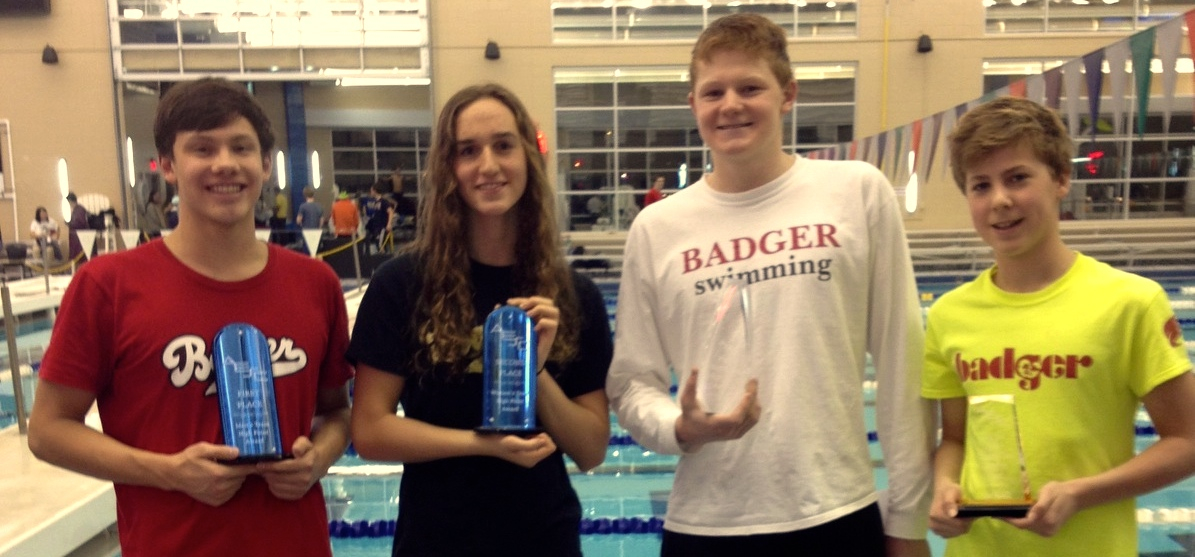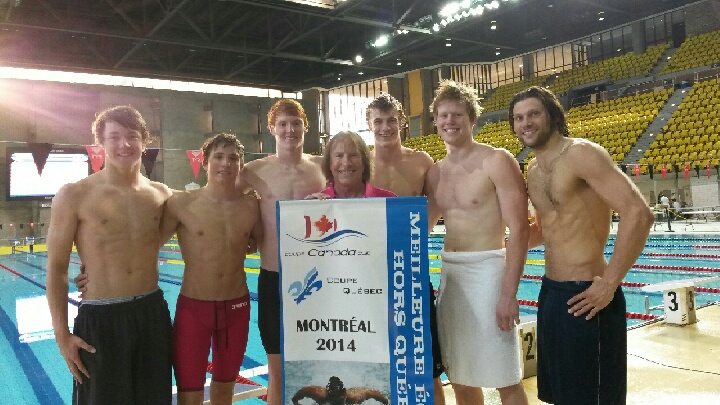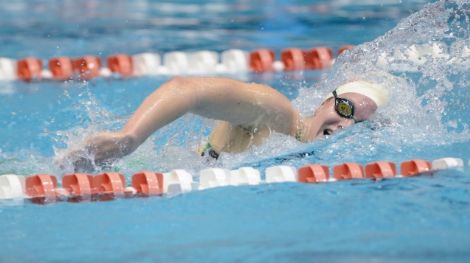A note from Badger Parent Advocate, Michael Conaton:
Seems to be a contradiction…For a swimmer one of the most joyous and festive times of the year can also be the most brutal time of the year for training. The extended school holiday situated at the perfect 2-3 months before championship season, makes for a coach’s dream. This is an ideal time for double workouts and longer sets to help the swimmers build their aerobic and endurance based foundations. As your swimmer gets older, Holiday Training can become more and more challenging. This week’s articles are offered to provide a couple different perspectives.
At a certain point during this week, it could be a natural reaction for your kids to wonder if the Badger coaches might actually be crazy. Do they really think the kids can do that set? Yes they do…and they’re not alone. The first article is about one of the greatest coaches of all time, Eddie Reese at the University of Texas. Eddie has won 10 NCAA team titles and has coached 29 Olympians to 39 Gold medals. The article touches on some of his beliefs and training philosophies. No surprise these are similar to those at Badger as Eddie and John Collins are contemporaries and friends. It’s no coincidence, for example that Badger Hall of Famer Rick Carey matriculated from Badger to Texas and swam so well during college, and went on to win his Olympic gold medals with John later in 1984. John’s son Wyatt is also currently a coach with Eddie at Texas. The article explains that Eddie (and many coaches including those at Badger) believe in building a strong aerobic background. Distance and repetition is one way to do this. I got a kick out of reading that some of the world’s best sprinters and stroke specialists of all time were not allowed to leave the distance lane at Texas until they reached a certain goal time in the 500 free.
The other major take away from this article is the concept that swimmers’ bodies can only make changes if they are under stress. Heart rates, muscle fatigue and pain thresholds, are all physical barriers to be tested under the duress of hard and intense training. How can your swimmer expect their bodies (hearts, muscles, lungs, etc.) to reach a certain apex in a race unless they push those limits in practice? So the article serves to not only attempt to explain some of the reasons for intense workouts, but also substantiates and corroborates certain Badger philosophies and practices that have produced nine Olympians of their own over time.
The second article is about Jim Steen, the legendary coach of Kenyon College from 1976-2012. Jim won over 50 NCAA Division III titles, and coached over 150 NCAA champs and over 300 All Americans at Kenyon. I like this article in the context of Holiday Training Week for some tips on the mental aspect of tough training. The article suggests the kids have a choice of approaching a hard set as either a threat or a challenge. Your kids picked swimming because they love to challenge themselves. When this is done in partnership with the coach as the article mentions Jim’s kids did, there can be a lot of success. The article’s message is for the kids to believe in their coach, believe in themselves and their ability to challenge themselves. So as painful as Holiday Training might be, remind your swimmers that the coaches know what they’re doing and that the tough sets are truly for their own good and best managed head on.
Finally I was lucky to attend the Golden Goggles Awards in New York City a few weeks ago. Let’s just say I can’t believe how far swimming has come over time. TV and Broadway stars complimented the presentations to this year’s top performers from USA Swimming. Lots of flash for sure but I have to admit, impressive as well. Towards the beginning of the ceremonies, the current USA National Team was introduced to the huge crowd, including new American Record holder, Badger’s own Cody Miller. Later in the program, an honored presenter of one of the actual awards was Badger alumna Cristina Teuscher. Many Badger families met Cristina this summer at the Lantin Family’s end of year picnic and know of her Olympic medals in 1996 and 2000 (not to mention her NCAA titles while at Columbia). Cristina was joined at the podium by Fordham Prep and Harvard grad Bobby Hackett who won a silver medal in the 1976 Olympics. It was very special and heartfelt that during their presentations both Christina and Bobby gave tribute to their respective coaches, John Collins and Joe Bernal from Harvard at the time. Suffice to say that Badger was very well represented that night.
See Eddie Reese’s article and Jim Steen’s article.
Here’s wishing everyone Happy Holidays! We’re thankful for a great 2014 and look forward to an even better New Year.



